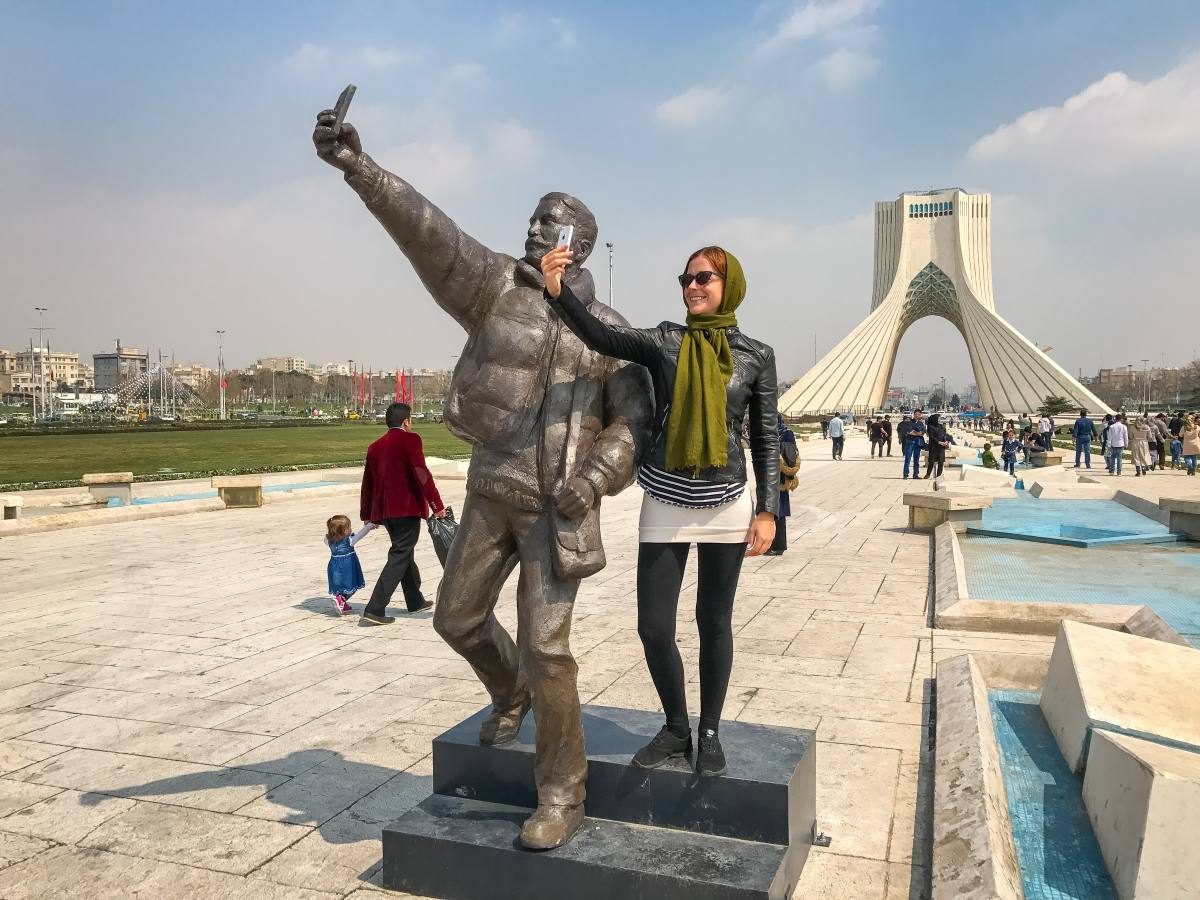
How to look good in Iran-THINGS TO KNOW BEFORE YOU GO?
Generally western travelers are advised to dress conservatively when travelling through the Middle East, however dress code is a tricky thing when it comes to Iran. That is because of people’s perception from Iran, who have usually only seen the black “Chador” on International News channels.
This couldn’t be further from truth, Iranian women are very modest in choosing their Hijab or Veil, and you can’t see its equivalent anywhere in the Middle East. A lot of our clients are shocked by the way women dress in Iran once they arrive, they see local women who are typically stylish and take great care of how they look.
Although there is nothing wrong with the “Chador” and/or a covered veil, when most of our female customer's land in Iranian airports they are the most covered people around. Iranian law states that women should cover their hair and Iranians observe this law by using colorful and beautiful head scarves, which are a bonus especially during the winter months.
If you go to cities such as Tehran, Shiraz and, to a lesser extent, Isfahan you'll notice that there are many women making small albeit noticeable fashion statements, and dressing in quite a modern and fashionable way by the standards of the region (designer clothes, dyed hair, visible make-up, heels, etc.).
So, in big cities covering your hair (not completely if you don't want to) and a knee-long coat or top over your jeans or trousers will be fine. Many of our female clients walk around in their jeans and encounter no problems at all.
Cities such as Yazd, Kerman, Kermanshah and Kashan are more conservative, so lower the tone accordingly.
Finally, places like shrines, mosques, etc. require full covering, but the good news is chadors are available for visitors on site, or you can buy yourself one at a very affordable price.
Below is a more detailed guide for your information:
Color: You can wear whatever color of clothes you wish in Iran, male and female. It is an absolute myth that women should only wear dark clothes. We even recommend our passengers to wear light colors during summer months.
Hair and body coverage: A scarf is all you need to cover your hair – or parts of it- modestly. It doesn’t mean you need to have a tight scarf around your head, in contrast it is rather acceptable for women to allow whips of their hair to frame their face. Body should be covered with loose clothing such as baggy shirts, coats and/or man-teus. You can also wear your jeans here in Iran.
WHAT NEEDS TO BE COVERED IN IRAN
Generally speaking: no hair, no cleavage, no shoulders or upper arms, no legs above the ankles.
Leggings are ok as long as you have a tunic/dress/shirt covering you up at least to your mid-thighs. If you follow these simple rules, you’ll be fine.
Men have it simpler – they just shouldn’t show their legs and upper arms.
There are, however, many subtle details when it comes to women’s clothing:
Hair: In Tehran and in big cities in the North the rules are slightly more relaxed. You must have the scarf basically just on the top of the head. Your hair can get out in front.
Arms: In most places it’s fine to have lower arms exposed. Just in the more conservative South I recommend that you opt for having your entire arms covered.
Legs: It’s ok if your pants are a tiny bit above the ankles, but don’t let them travel more!
Feet: Good news! You can have your feet exposed! Use this privilege to the fullest, as that’s the only body part that can fully breathe.
Did locals stare at me? You bet! But not because I’d wear something inappropriate, more so just because I stood out. And who’s not curious about foreigners in less touristy places? I would be!
Formal Wear for Men & Women in Iran:
In Iran the two-piece suit, often with a vest, is worn more than in the West. Office workers, technocrats, civil servants, doctors, teachers, and bank clerks wear suits not only to work, but also when visiting friends and family, going shopping, or traveling, especially if they are middle aged or older.
Artistic and engineering types, and those who have lived abroad, tend to dress less formally, with trousers and coat of different fabrics.
Dress code in Iran has some tips. ties are rarely worn, especially among the more conservative and pious strata, and are seen as a Western irrelevance.
What Male Tourists Can Wear in Iran?
Avoid shorts at all times, as well as loud, bright shirts and tops (e.g., Hawaiian shirts).
Some Iranian youngsters have recently taken to wearing tight fitting, sleeveless tops, but this fashion is generally disapproved of and is limited to the very young and trendy.
All other leisure wear is acceptable, although be aware that tracksuit bottoms are only used indoors or in gyms, so wearing those pants in the street is likely to attract puzzled glances and smiles. Short sleeves are acceptable when sightseeing and shopping but not for formal or business occasions.
Footwear: Sandals and open-shoes are very common in Iran. Nothing to worry about on this side.
Our recommendation: When flying to Iran just carry a long baggy shirt and a thin head scarf (you can even use a normal winter scarf and turn into an Iranian approved headscarf, we leave that to your own creativity), if you don’t want to use the scarves provided at Tehran’s international airport.